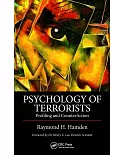Our understanding of how the human brain performs mathematical calculations is far from complete. There are still perplexing mysteries -- how, for instance, do idiot savants perform almost
miraculous mathematical feats? -- but the picture has grown steadily clearer. In The Number Sense, Stanislas Dehaene offers readers a look into these stunning discoveries, in an enlightening
exploration of the mathematical mind.
Using research showing that human infants have a rudimentary number sense, Dehaene suggests that this sense is as basic as our perception of color, and that it is wired into the brain. But how
then did we leap from this basic number ability to trigonometry, calculus, and beyond? Dehaene shows that it was the invention of symbolic systems of numerals that started us on the climb to
higher mathematics. Tracing the history of numbers, we learn that in early times, people indicated numbers by pointing to part of their bodies, and how Roman numerals were replaced by modern
numbers. On the way, we also discover many fascinating facts: for example, because Chinese names for numbers are short, Chinese people can remember up to nine or ten digits at a time, while
English-speaking people can only remember seven. A fascinating look at the crossroads where numbers and neurons intersect, The NumberSense offers an intriguing tour of how the structure of the
brain shapes our mathematical abilities, and how math can open up a window on the human mind.





















